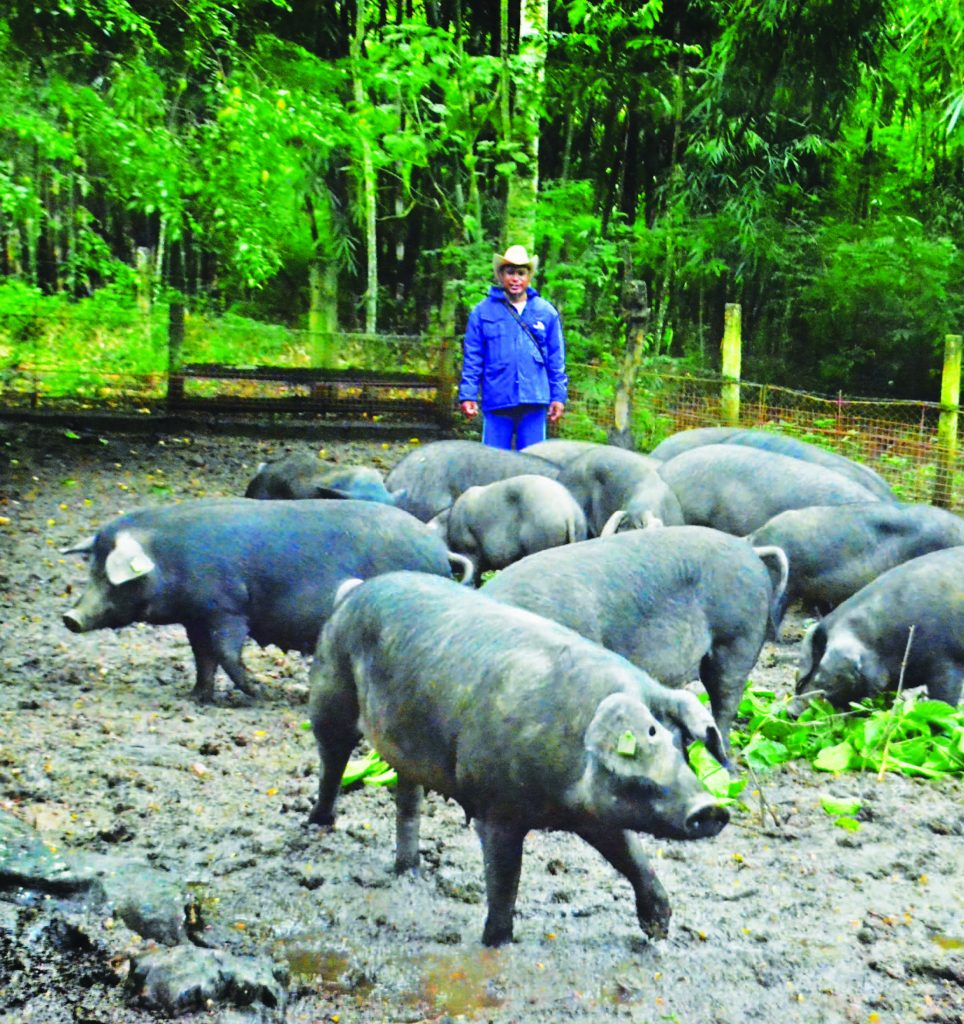Pigs haven’t had it easy – being hunted in the wild by tribesmen of a hundred nations or raised by the millions for meat.
Many scientists consider pigs smarter and easier to train than most dogs or cats, which is a shame because they rarely get a chance to show their talents.

But there’s a place in Nueva Vizcaya where pigs run free. Not in the wild, but in huge pens where they can roam and root around at will.
“I was heavily influenced by Peter Kaminsky, author of Pig Perfect, who said we should let pigs be pigs. Anything else is just cruel,” says farm owner Carlos Padilla Jr. “I didn’t want to preach free-range techniques then, but promised myself that at least in my farm, we would practice responsible and ethical hog raising.”
Some 250 kilometers north of the Philippine capital of Manila lies Sitio Anting, a sprawling, tree-lined free-range farm situated at the foothills of Nueva Vizcaya. From the road, the farm’s entrance is barely noticeable, but once inside, visitors will be welcomed by a well-ordered garden and receiving area.

Padilla’s seven farmhands keep about 370 pigs of various species and breeds, ranging from Cordillera highland pigs to tusked wild hogs. But the most beloved and spoiled are his 150 mostly island-born Large Black Pigs, imported from Australia and the United States. None of these pigs are sold for meat – they’re only traded for breeding purposes.
”We have 10 free-range pens, each spanning almost a hectare. Plants, worms and insects are abundant, but we never let the animals overgraze,” says chief farmhand Jim Cabacungan. “We leave plots to recover for about a month before setting the pigs loose again.”

Free-range farming has always been popular in the Philippines, a rural archipelago comprised of over 7100 islands. The Filipino breed of choice has traditionally been the native Philippine pig – a scrappy but small black hog.
Native pigs, accustomed to tropical foraging, can reach 40 to 50 kilogrammes after a year – but imported breeds can easily breach 100 kilograms. Padilla keeps both native and imported hogs, experimenting to see which ones are most adaptable.
Every day, the pigs are fed freshly-gathered Madre de Agua, Azolla, Kangkong, Napier Grass, Malunggay, Indigofera and a unique native plant called Talilong, which grows naturally in Sitio Anting. A nearby vegetable terminal supplies unsold but still-palatable vegetables – hauled free twice weekly.
If you’re ever in Nueva Vizcaya and want to see pigs wallowing happily, then come visit. “We want to be a model farm so others can follow our free-range methods as a way of promoting animal welfare,” concludes Padilla. “As Kaminsky said, the best way forward is to let pigs be pigs.”
Learn more about Sitio Anting’s Large Black Pigs on facebook.com/largeblackpigsofsitioanting. Learn more about pig breeding on thepigsite.com.
This appeared in Animal Scene magazine’s February 2020 issue.
You might want to read:
– Family of mini-pigs takes over neighborhood
– 6 pigs who found fame on the internet
– Pig safety versus human indifference: The African Swine Fever debacle






